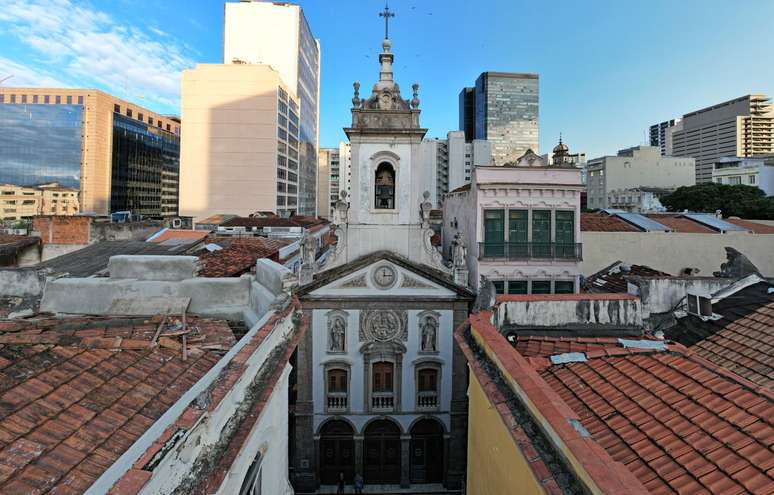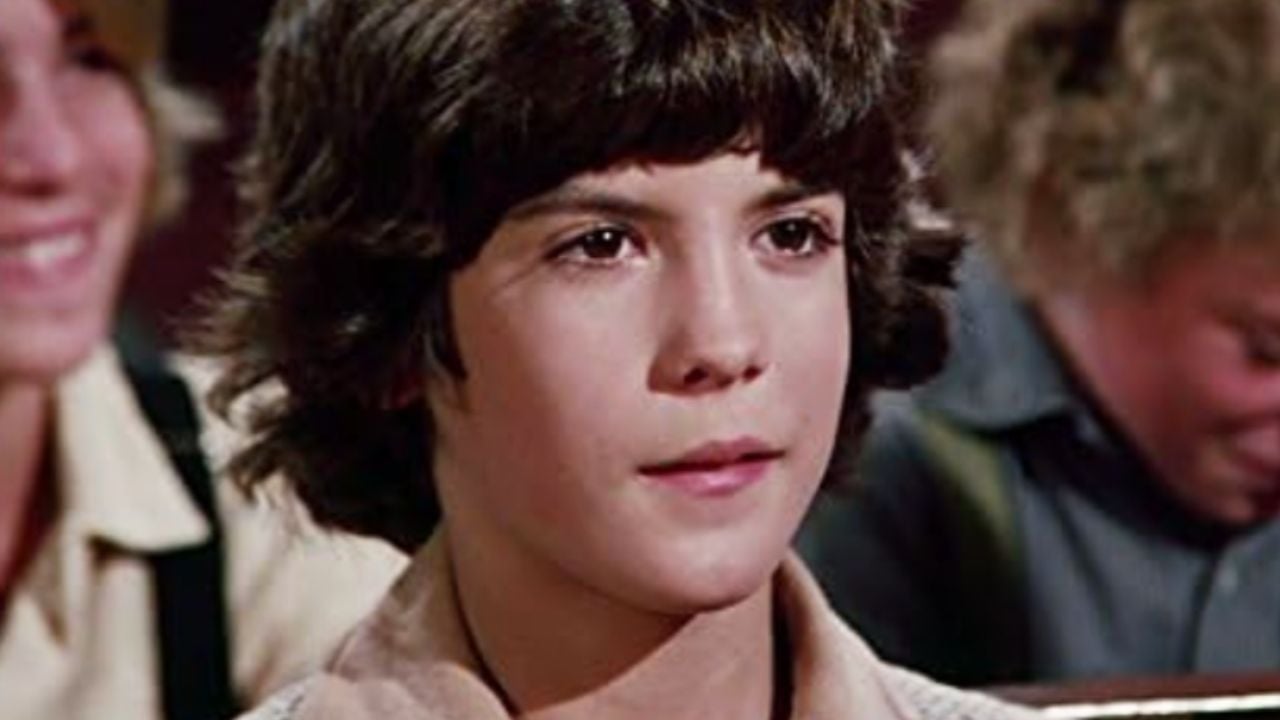The historic Church of Nossa Senhora da Lapa dos Mercadores, in Rua do Ouvidor, in the heart of the Centre, was built in 1750 and, after decades, returns to signal the hours of the day loud and clear to visitors to the region, in a project wanted by the private initiative The bells of the 18th century churches ring again and mark the hours in the center of Rio
Called “Igreja dos Mercadores”, the temple built in 1750 right on the corner of Rua do Ouvidor and Travessa do Comércio (the narrow street that starts from the historic Arco do Teles) has attracted the attention of passers-by in that lively and bohemian place in the center of Rio, nicknamed Little Lisbon by those who frequent its famous bars, restaurants, museums and cultural centers. Until recently, the church dedicated to Nossa Senhora da Lapa by street vendors and traders from the region – who nearly 300 years ago created the Catholic brotherhood that owns the chapel – was falling apart, suffering from graffiti, facade blocks falling the streets, leaky roof and even a tree had grown on its roof. Interdicted by the civil protection, it was closed to the public for about 3 years.
As a result of an innovative project by the Archdiocese of Rio de Janeiro, a heritage commission was created by the Catholic Church in Rio, which worked to try to reactivate and revive previously vibrant temples that had fallen into decay. Remarkable works of engineering but which, because owned by associations of the faithful – and not by the Church itself based in the Vatican – ended up being abandoned, for various reasons ranging from bad administration, bad luck or lack of professionalism in dealing with resources that have become scarce, with the flagrant decrease of residents in regions such as downtown Rio or São Cristóvão. With no residents—municipal legislation banned the construction of new residential buildings in the region from the 1960s until the late 1990s—givings and tithes tend to drop. In the case of the Church of Nossa Senhora da Lapa dos Mercadores, the situation seems to have changed, and rapidly. The difference is already noticeable walking through the Center and seeing the advertising signs of the small church, such as for example at the corner of Primeiro de Março and Largo do Paço or right in front of the religious building, the result of a collaboration between the new administration of the temple with the advertising company Kallas Mídia, owner of the advertising rights on Rio’s illuminated road signs.
Going to lunch, leaving the works for the future editorial staff of DIÁRIO DO RIO – which are in the final stretch – the loud, ancient and deeply emblematic sound of the church bells began to attract attention, which returned, on yesterday’s date ( 2/ 5), chime and time signaling. The temple, the first in Brazil to receive a carillon with 12 bells donated by the Baron of Lagoa in 1872, established itself as one of the major attractions of the Praça XV region when, after more than 5 decades, it returned to mark and play the call” Angelus” twice a day – noon and 6pm, bringing joy and great hope in the recovery of the region. “It’s incredible to be able to know that lunchtime has arrived right by ear. It’s something that makes me very nostalgic,” said Sandra Costa, who was passing in front of the temple and looked up, amazed, looking for the bell with gaze, while listening to the curious tolling of the “Angelus”: after having rung the 12 bells, there are three series of two bells.
Igreja no Centro que sofreu bombardeio no século XIX reabre em maio
Church bells grew out of an ancient tradition in the Catholic Church of reciting this prayer known as the Angelus. The name derives from the first word of a Latin prayer, Angelus Domini nuntiavit Mariæ (“The Angel of the Lord announced Mary”). Remember the incarnation of Jesus Christ and invoke the intercession of the Blessed Virgin Mary. The tolling would derive from a custom of monasteries in the sense of ringing the bells to call their monks to prayer. For many centuries, religious men and women have adopted the custom of praying several times a day, based on a Jewish practice found in the Old Testament. To Catholics, bells are so important that when a new bell is installed in a church, it is traditionally blessed by the bishop. The ceremony of blessing a new bell is almost like a baptism, and the ceremony also involves the use of holy water. Bells are also given names, usually in honor of a patron saint or the Blessed Virgin Mary.
But it’s not just Catholics who are excited by the tolling of the bells of the Igrejinha dos Mercadores. “The bell announces that it is time for lunch and Happy Hour. It is the face of the working day, and it cheers you up, as well as being very touristy. It would be nice if the church bells here in the Center all rang at the same time” , suggests Célio Barbeito, who called himself a Kardecist spiritualist and walked along Rua do Rosário while, with his head, trying to find the source of the auspicious musical noise. Sponsored by Sergio Castro Imóveis and Shopping Paço do Ouvidor, the reactivation of the bells of the Catholic temple – now with automated ringing by a kind of robot – is something of a local unanimity; the church, built in Baroque style, should open its doors to the general public with daily masses, from Monday to Saturday, starting in June, but it is already open to the public every Saturday and Sunday, from 11:00 to 17: 00:00:00. DIÁRIO DO RIO is the media partner of this initiative, as announced by the huge and beautiful poster placed at the entrance to the temple, cataloged by Iphan since 1937.
“We are doing all this with our resources because the brotherhood has no resources, and our company Sérgio Castro supports the return of this heritage to Rio de Janeiro,” Claudio André de Castro told the O Dia newspaper, to which he also ha explained that fraternities, like the one that owns the temple, arose through people who had common devotions and jointly invested in a new temple. In this specific case, traders. For the businessman, being at the forefront of the revitalization of the Church of Nossa Senhora da Lapa dos Mercadores is to honor the trajectory of these professionals, among whom he ranks, defining himself as a “merchant of modern times”. He was nominated by the archbishop of Rio de Janeiro in charge of the brotherhood. Castro says the management of religious assets must also be professional and that he plans to get the church admitted to Aliança Centro, a group of property owners in downtown Rio who, using a winning idea that has revitalized Chicago, have helped change the face of the Center. “This may inspire other fraternities, who are large homeowners in the region, to become more actively involved in destinations in our neighborhood, especially in regards to their custodial services,” he says.
These Catholic religious associations are maintained with church collections and with their own assets. The Brotherhood of Nossa Senhora da Lapa dos Mercadores supported itself by renting rooms, apartments and shops in a commercial building, on Rua Sete de Setembro, which it owned. In the building, the Gourmet Club, by chef José Hugo Celidônio, operated for two decades. With the pandemic, the building has lost tenants, which has had a major impact on the generation of funds for the brotherhood, which today has several properties available in its building at Sete de Setembro, 63.
The historic building has already had the external lighting reactivated, which highlights the church bell tower, its balconies and its lantern, which have been wrapped in pitch for 10 years. The facade is beautiful and attracts the attention of passers-by. With the total revitalization of the space, the Irmandade de Nossa Senhora da Lapa dos Mercadores intends to offer the population of Rio de Janeiro and Rio de Janeiro, with a church with daily masses and opening hours, from Monday to Saturday. The church will also be a venue for religious celebrations and cultural activities, such as music concerts and educational activities centered on the Rio Antigo, historic architecture and the history of Brazil.
The church tower was hit by cannon fire during the Armada Revolt in 1893, when the battleship Aquidabã fired on downtown Rio, knocking down the buildings and church tower (the current tower was rebuilt in the late 19th century). As a result of the accident, the image of Nossa Senhora da Fé which was right at the top of the bell tower fell from a height of 25 metres, falling into the street and breaking only two fingers on her hand; the fact became known as the Miracle of Rua do Ouvidor. Its impressive entrance hall, with two beautiful carved wooden staircases and a Portuguese marble floor with a beautiful central compass rose in more than one stone colour, also holds the same cannonball that struck the stone statue of Lioz. A very carioca miracle. “Lapa dos Mercadores is reborn as well as the Historic Center of Rio, resignifying itself and placing itself as a must-visit historical monument for those who love Rio and the history of Brazil. It is no wonder that many friends are helping the return from our little church to life “Castro says. And it’s really worth a visit.
William Bittar: Sobre a igreja de Nossa Senhora da Lapa dos Mercadores do Rio de Janeiro
Church of Our Lady of Lapa dos Merchants Headquarters of the Brotherhood of Our Lady of Lapa dos MerchantsRua do Ouvidor, 35 – Downtown Rio de Janeiro (corner with Travessa do Comércio)Instagram: @igrejalapadosmercadoresTransportation: VLT – Hop off at Ferry Station, and walk along Boulevard Alfred Agache (Olímpico) to Rua do Ouvidor, or cross Arco do Teles and reach the corner with OuvidorBy car: get off at the corner of Primeiro de Março and Ouvidor or at Rua do Mercado and Ouvidor, or park at the Terminal Menezes Côrtes, exit on Rua São José and walk on Primeiro de Março to Ouvidor or Praça XV, enter Arco do Teles and exit on Ouvidor
Source: Terra
Rose James is a Gossipify movie and series reviewer known for her in-depth analysis and unique perspective on the latest releases. With a background in film studies, she provides engaging and informative reviews, and keeps readers up to date with industry trends and emerging talents.






